Posted by Blair Lampe Know How
Your tires might not be the most complex part of your vehicle, but they’re arguably among the most indispensable. Keeping your tires in good condition is integral to both safety and performance, so when they suffer damage, it’s important to take care of it immediately. You’re likely familiar with patching tires, but are there limits to this practice? For instance, can you patch the sidewall of a tire?
Where the Rubber Meets the RoadTires have more going on than meets the eye. Over the years, tire technology has evolved to make them stronger, longer-lasting and safer in various driving conditions. There are many parts of a tire, but the two main external parts are the tread and the sidewall.
The tread is what contacts the road. It’s very thick, it wears down over time, and it’s the part you pay special attention to when you’re watching out for alignment issues. It is meant to wear down, but evenly.
The sidewall is thinner because it is not designed to contact the road and wear down. It protects the inner plies of the tire, which are structural, and it flexes as the tire rotates and bears the weight of the vehicle.
Patching Your TiresMany people keep tire plug kits in their vehicles for emergency roadside repairs, but patches are a little more in-depth. In order to properly install a patch, the tire must be safely removed from the vehicle and the rim. The hole or tear area must be cleaned up and covered with vulcanized cement so that the patch can be installed from the inside and sealed before the tire is reinstalled on the vehicle.
The patch adheres to the tire’s material around the damage, and the added pressure of inflation actually works to press the patch outward further plugging the hole. If done correctly, this creates a seal that can last the rest of the tire’s life. Patches are viable for repairing small holes or tears, generally, those that are 1/4 inch or less.
Patches are viable for repairing small holes or tears, generally, those that are 1/4 inch or less.
If you have a leak, hole or tear in your sidewall as opposed to your tread, you should not repair it with a patch. The thinness of the sidewall gives little material for a patch to adhere to, and the damage to the sidewall leaves the tire structurally compromised. As mentioned before, the sidewall tends to flex, putting extra stress on the repair and increasing the likelihood of patch failure, which is more likely to occur at higher speeds and pressures.
Patching the sidewall is simply not a good idea, as a leak or blowout while the vehicle is underway could result in loss of control with catastrophic consequences. So if you end up with a damaged tread, you can plug and patch away, but if the damage is to your sidewall, you’re going to have to replace the tire, which usually means replacing the fronts or rears in pairs.
So can you patch the sidewall of a tire? The answer is a solid no. Luckily, sidewall damage is far less common than damage to the tread, and you can minimize it by paying attention to road conditions, not overloading your vehicle, staying away from the curb when you’re parallel parking, and keeping your tires properly inflated, rotated and maintained.
Check out all the tires, wheels and accessories available on NAPA Online, or trust one of our 17,000 NAPA AutoCare locations for routine maintenance and repairs. For more information on patching tires, chat with a knowledgeable expert at your local NAPA AUTO PARTS store.
Photos courtesy of Blair Lampe.
Blair Lampe is a New York-based professional mechanic, blogger, theater technician, and speechwriter. In her downtime she enjoys backpacking wherever her boots will carry her, rock climbing, experimental theatre, a crisp rosé , and showering love on her 2001 Sierra truck.
Written by Steven Schiller
Fact checked by Henry Speciale
According to the US National Transportation Safety Board, on average, 33,000 accidents are caused by tires yearly. These accidents can be avoided if motorists know what to do. Some people resort to patching to save their costly tires as a quick fix. But unbeknownst to many, the tire wall and shoulder are irreparable zones. Therefore, knowing how close to sidewall can a tire be patched is critical. It is required to spare a gap of 6 mm or more from the tire shoulder.
These accidents can be avoided if motorists know what to do. Some people resort to patching to save their costly tires as a quick fix. But unbeknownst to many, the tire wall and shoulder are irreparable zones. Therefore, knowing how close to sidewall can a tire be patched is critical. It is required to spare a gap of 6 mm or more from the tire shoulder.
Read on to know the details when you need to fix your tire.
Table of Contents
There will be a tire patch fail when the patch is too close to the sidewall or shoulder, which is less than 6 mm.
You can’t patch a tire shoulder or patch a sidewall of a tire, and you need to replace the tire if the damage is too near the wall or directly on the tire shoulder.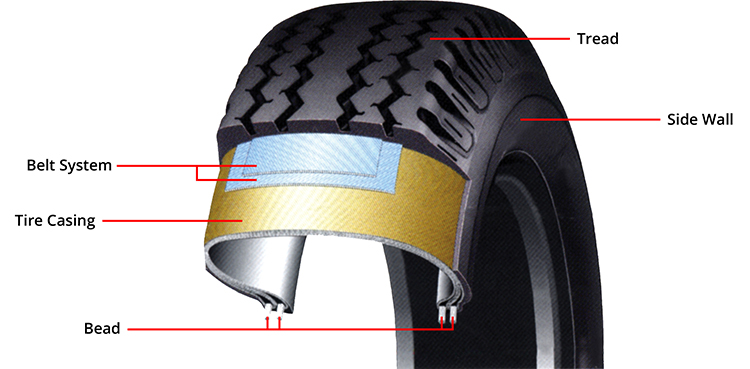
Also, if the punctured hole covers more than ¼ inch, it’s no use attaching a patch. It won’t fully cover the hole, and the wheels will deflate when the car starts moving.
Why is the gap of 6mm from the sidewall important when patching your tire? Here’re what you should know about tire sidewall structure:
The sidewall accounts for the tires’ high performance and speed and holds the inner structure together, so it is critical to have your sidewall inspected from the inside out whenever you have a tire puncture.
So, make sure you know that:

So, when can a tire not be patched? Here’re the signs showing that you might need a tire replacement:

Step 1: First, check how close the puncture in sidewall of tire is to see if you can still give it a quick fix for your trip to the repair shop.
Step 2: If it’s beyond 6mm from the sidewall, you can apply a plug or a patch.
Plugging
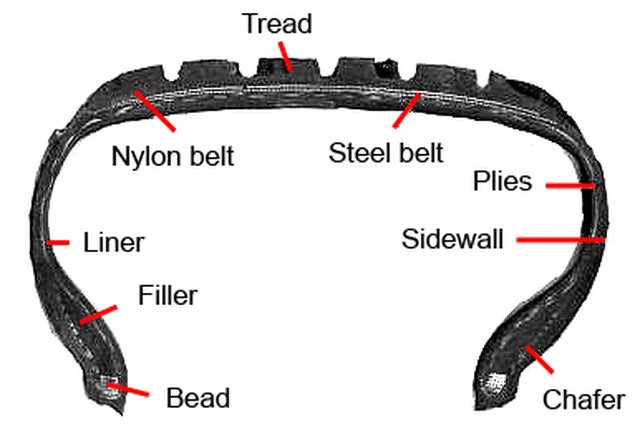 Keep pushing, pulling and rotating so that the cement gets applied inside while you are shaving and cleaning the hole.
Keep pushing, pulling and rotating so that the cement gets applied inside while you are shaving and cleaning the hole.Patching
With the frequency of use and exposure to harmful elements, it’s not uncommon to have our tires punctured.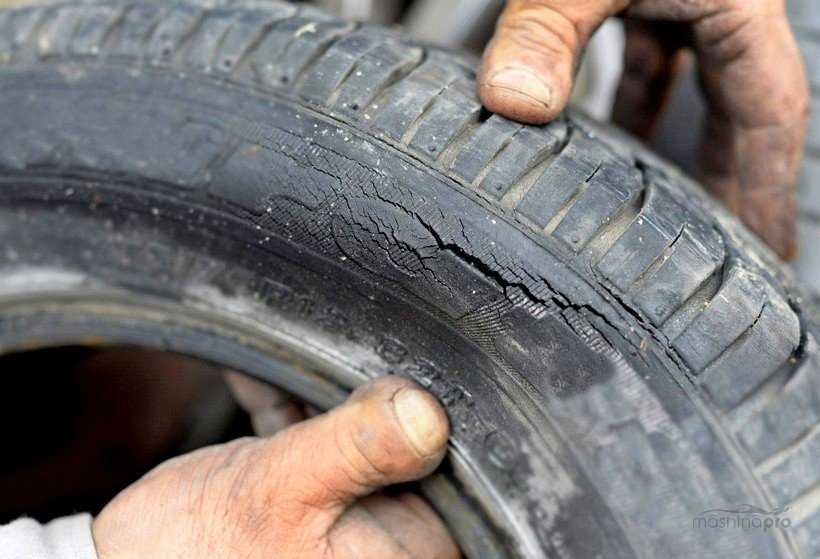 But we can follow these preventive measures to lengthen their tread life.
But we can follow these preventive measures to lengthen their tread life.
How long can you drive on a patched tire?
So long as the installation was done well, it can last for almost 25,000 miles, which is typically from seven to ten years or until its tread life is reached.
How close can a tire patch be to another patch?
You’ll find that a nail in sidewall of tire repairable up to a certain degree. You can patch a tire with 2 nails in it. This is possible as long as the gap between the two punctures is not less than 16 inches and not more than 2 times.
You can patch a tire with 2 nails in it. This is possible as long as the gap between the two punctures is not less than 16 inches and not more than 2 times.
Can you patch a tire on the side of the road?
Yes, you can. Park your vehicle on the side of the road or shoulder, which is specifically reserved for road emergencies. I can get my tire patched for free when I have tire sidewall repair products in my car, should the inevitable happen.
When you plug a tire sidewall, keep a safe margin of 6 mm and above to avoid damaging the tire. A temporary “quick fix” plug helps at least to get your vehicle to the nearest auto repair shop safely.
Can you drive on a damaged sidewall?
No, it is not advisable as it could lead to a blowout. Not only is it dangerous to drive, you can also get a fine for driving on a damaged sidewall and gain penalty points on your driver’s license.
Can’t you patch a tire shoulder?
No, you shouldn’t, as it is an irreparable area.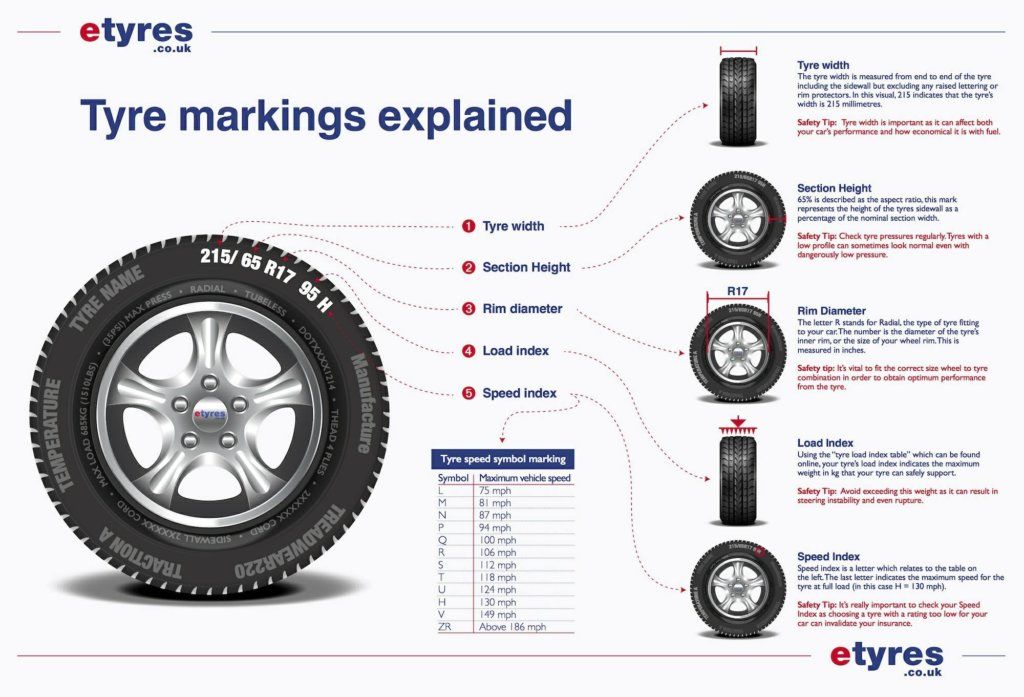 If you do, it will just be a temporary fix that could endanger lives inside the vehicle.
If you do, it will just be a temporary fix that could endanger lives inside the vehicle.
With frequent driving and the countless revolutions a wheel makes, it’s no longer a matter of “if” but a question of “when” will a flat tire, or blowout happen. So being knowledgeable about the essentials of tire care and repair is a must.
Knowing how close to sidewall can a tire be patched should help us exercise safety measures and get professional help for our tire’s optimum health. We can enjoy our tires’ maximum benefits if we take good care of them.
Read next:
I'm Henry, the content writer for PPMC Transport. We build our site entirely on experience and extensive market and customer research. My goal is to create a trusted platform where people can go to determine what is best for their vehicles in terms of safety and convenience. Keep an eye out for our useful guide!
We build our site entirely on experience and extensive market and customer research. My goal is to create a trusted platform where people can go to determine what is best for their vehicles in terms of safety and convenience. Keep an eye out for our useful guide!
- Speciale Henry
Photo: Mikhail Tereshchenko / TASS
adv.rbc.ru
See also
Nail, rebar or sharp stone - sometimes you can damage a tire almost from scratch. First of all, the scale of damage is important, and often rubber can still be repaired. Most often, motorists turn to tire shops for repairs in the middle of autumn or spring - just in the season of replacing summer tires with winter tires and vice versa. In order not to stand in lines, it is worth knowing exactly when to go to the tire shop and when to go to the store.
The most common "injury" to rubber is a puncture, and it can most often be repaired. Professionals in the nearest service will do it much faster, and your hands will remain clean. But if the puncture caught you in a deserted place, and there is a pump and a tire repair kit with harnesses in the trunk, you can patch up the tire yourself. Most often, when repairing the front tires, the wheel can not even be removed, it is enough to turn the steering wheel in the right direction and find the puncture site.
Professionals in the nearest service will do it much faster, and your hands will remain clean. But if the puncture caught you in a deserted place, and there is a pump and a tire repair kit with harnesses in the trunk, you can patch up the tire yourself. Most often, when repairing the front tires, the wheel can not even be removed, it is enough to turn the steering wheel in the right direction and find the puncture site.
First, the hole is cleaned with a helical awl, the repair harness is smeared with glue and tucked into the eye of the awl, after which it is inserted into the tire hole. With a sharp movement, the tool is removed, and the tourniquet remains inside and securely clogs the hole. The tails are cut with a knife, but it is recommended to leave about 20 mm. After that, the tire can be inflated and the pressure checked.
Repair with tourniquets is not considered long-term, because after some time they dry out and begin to let air through. A more advanced puncture repair method is vulcanization.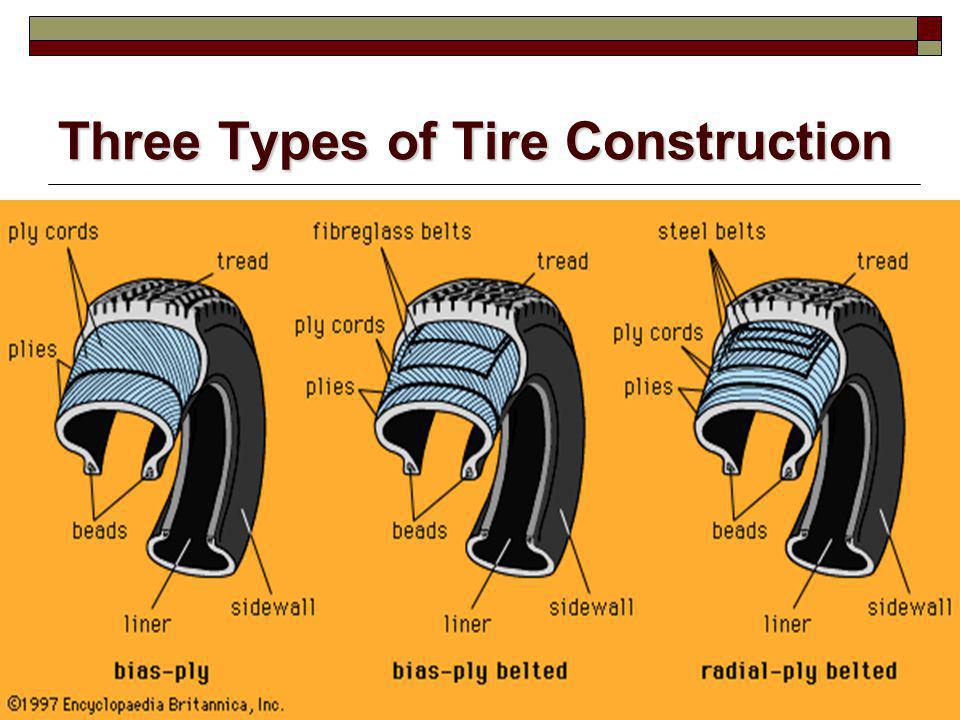 The hole is sealed with an elastic patch, and the funnel at the puncture site is filled with a special compound. A vulcanizer is put on top, which heats the patch and solders the excess.
The hole is sealed with an elastic patch, and the funnel at the puncture site is filled with a special compound. A vulcanizer is put on top, which heats the patch and solders the excess.
Under service conditions, the puncture is also repaired with cord fungus. The puncture site is processed and drilled to roughen. Everything is smeared with glue, after which a fungus is introduced from the inside of the tire, its cap is rolled, and the excess legs are cut off from the outside.
Photo: PA Images / TASS
A puncture can also be repaired with sealant. Many car manufacturers with run flat tubeless tires put compressor repair kits in the car instead of a spare tire - a bottle of pressurized sealant. The car is raised on a jack, after which the sealant is pumped into the damaged wheel through the nipple. Next, you need to spin the wheel and pump it up. After repair, the car should be driven a couple of hundred meters to check the tightness of the tire. If it has not recovered, the procedure is repeated.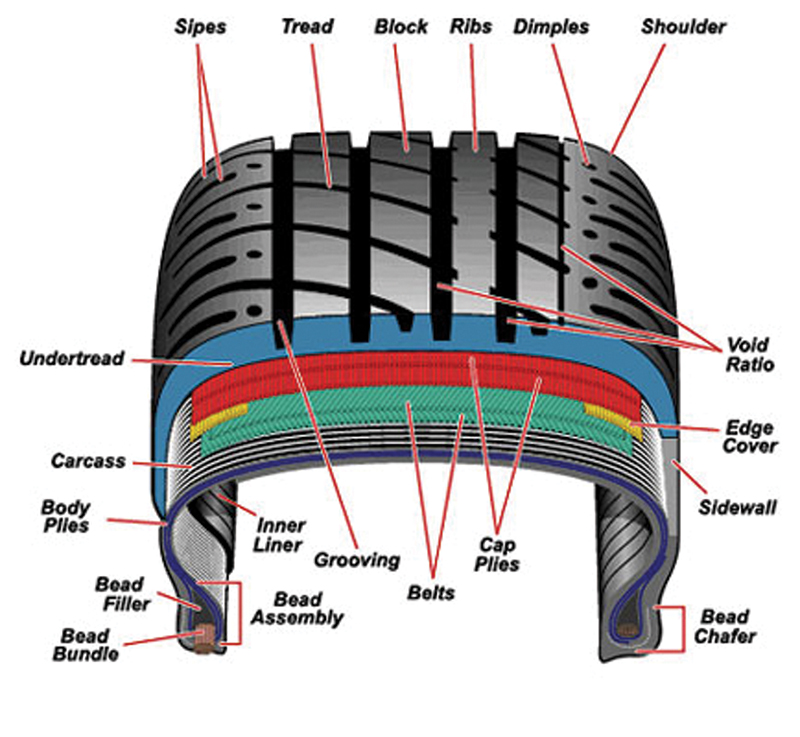
It happens that a self-tapping screw or a nail closes the hole in the tire, remaining inside. Do not rush to pull it out - until the pressure drops, you can safely get to the service for vulcanization. Sometimes the wheel begins to blow off a few weeks after the self-tapping screw got into it. Therefore, it is better to check tire pressure periodically, and if the pressure sensor lights up, you should at least visually inspect the tire for a nail head.
A bump or bulge most often occurs on the side of a tire after hitting an obstacle or hitting a hole at speed. From the impact, the sidewall carcass threads are damaged, the tire ceases to hold the load and pressure, swelling appears. Any small bump eventually turns into a larger one, and with such a defect, the wheel can burst at any time. This is a direct safety hazard because a sudden flat tire can cause loss of control and a road accident.
Some bulges can be repaired, but no patch will ever restore a tire to factory stiffness. The ideal option in this case is to replace the tire. If a hernia has appeared on the tread, then you can extend the life of the tire with the help of cord patches - ready-to-use patches with an adhesive layer. But if swelling is found on the sidewall, the likelihood of repair is minimal, the wheel is easier to change. Blisters on low profile tires are generally not repairable.
The ideal option in this case is to replace the tire. If a hernia has appeared on the tread, then you can extend the life of the tire with the help of cord patches - ready-to-use patches with an adhesive layer. But if swelling is found on the sidewall, the likelihood of repair is minimal, the wheel is easier to change. Blisters on low profile tires are generally not repairable.
Only car service professionals can repair a side cut. Cord patches will be needed to repair the damage, but after some time the wheel will still have to be changed. This method will work only if the gap is not in the shoulder area of the tire, then no one will repair it.
In general, cuts or punctures, unlike punctures, are considered non-repairable, since the integrity of the frame is violated. And breakdowns do occur on the go, when the tire abruptly loses pressure and has time to make only a few turns “on the rims” before it comes to a complete stop. In this situation, the cord breaks and the layers of the tire are destroyed. Even if it is possible to close the hole, it is not recommended to use such a weakened tire.
Even if it is possible to close the hole, it is not recommended to use such a weakened tire.
Photo: Mikhail Pletsky / Russian Look
Cracks, sidewall abrasions and unprofessional tire fitting can also lead to tire problems. Cracks can occur as a result of improper storage of tires. Their danger is that moisture begins to flow to the cord, and this already renders the frame unusable. Air can also escape through cracks. Cracks cannot be repaired and tires will not last long. A tire with cracks is deformed, blistered, and may even break while driving.
Rubbing against curbs or driving on uneven roadsides can damage the tire sidewall. When driving like this, it is worth inspecting the tires for damage regularly. If a slight wear is found, the wheels can be swapped, which will slightly extend their service life and allow you to delay the purchase of new ones.
Improper fitting can damage the tire bead. In this case, the tire will lose its geometry and sit on a disc with a bevel, “eights” will be visible during rotation, and the driver will feel vibration while driving.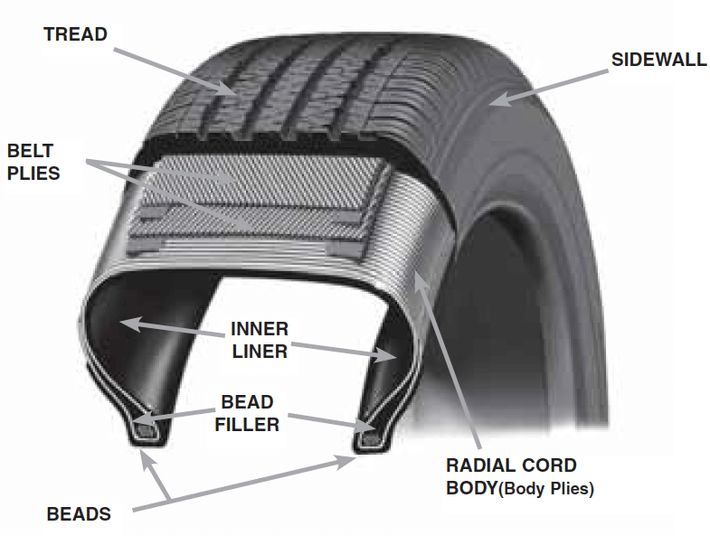 It is impossible to repair this defect, the wheel must be changed as soon as possible, otherwise there is a risk of damage to the suspension.
It is impossible to repair this defect, the wheel must be changed as soon as possible, otherwise there is a risk of damage to the suspension.
How to Tires
Another season of changing shoes is approaching. And you may remember that on one of the tires after the last winter/summer there is a jamb - a small bump. I don’t want to run to the store for the sake of one new tire. We understand. Or maybe it looks even better if repaired?
Yes, not every wheel that has met with a nail, rebar sticking out of the ground or a sharp stone on the road is considered damaged. Everything, of course, depends on the scale of the damage and its location on the tire itself. Some are easily repaired, while others are simply impossible to do - the tire can only be sent to the trash.
A bulge on a wheel, referred to by drivers as a bump or bulge, is the most common tire sidewall defect.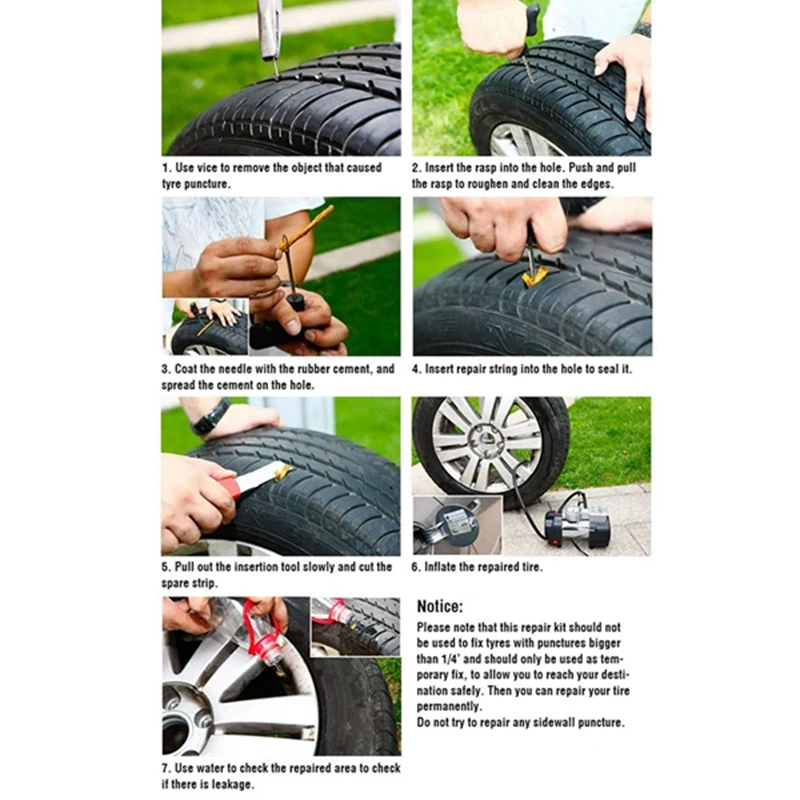 It appears due to a collision with an obstacle or after falling into a pit, more often at high speed. The threads of the sidewall carcass are easily damaged by impact, and the tire at this point can no longer hold the load and air pressure - swelling appears. A small bump sooner or later turns into a big one, and driving with such a defect is dangerous - the wheel can shoot at any moment. At high speed, this is fraught with loss of control, departure from the road and a rollover.
It appears due to a collision with an obstacle or after falling into a pit, more often at high speed. The threads of the sidewall carcass are easily damaged by impact, and the tire at this point can no longer hold the load and air pressure - swelling appears. A small bump sooner or later turns into a big one, and driving with such a defect is dangerous - the wheel can shoot at any moment. At high speed, this is fraught with loss of control, departure from the road and a rollover.
The quality of roads in Kazakhstan contributes to the appearance of bulges on tires
Some types of bulges are repairable, although this is a temporary measure. Not a single patch can restore the factory rigidity. Ideally, change the tire.
Special cord patches can extend the life of a tire with a herniation, even if the swelling has appeared on the tread. The sidewall is a different story. If the swelling appeared at a distance of more than 40 mm from the side, it can be repaired.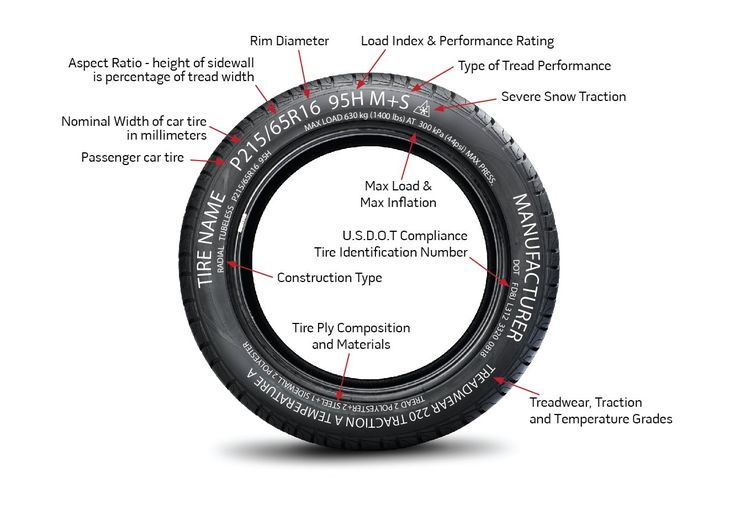 If not, then the wheel needs to be replaced. Blisters on low profile tires are most often non-repairable.
If not, then the wheel needs to be replaced. Blisters on low profile tires are most often non-repairable.
For maximum safety when riding with a repaired bump, insert the tube. This is an inexpensive and reliable solution. On our market, you can find cameras made in China and Russia, the latter are slightly more expensive, but also of better quality.
The elimination of a side cut is a serious operation, therefore, as in the case of a bump, you will have to go to the professionals. We need cord patches, fortunately in our time they are of different sizes and with a different number of layers. And if you do it wisely, then you can't do without special tools and vulcanization.
A cut, by the way, cannot be healed in all cases. If the gap is in the shoulder area of the tire, it is unlikely that anyone will undertake to repair it, since no guarantees can be given here. However, our Kulibins take on even the most difficult cases, cutting out parts of the sidewalls from the tires and even weaving the cord on their own.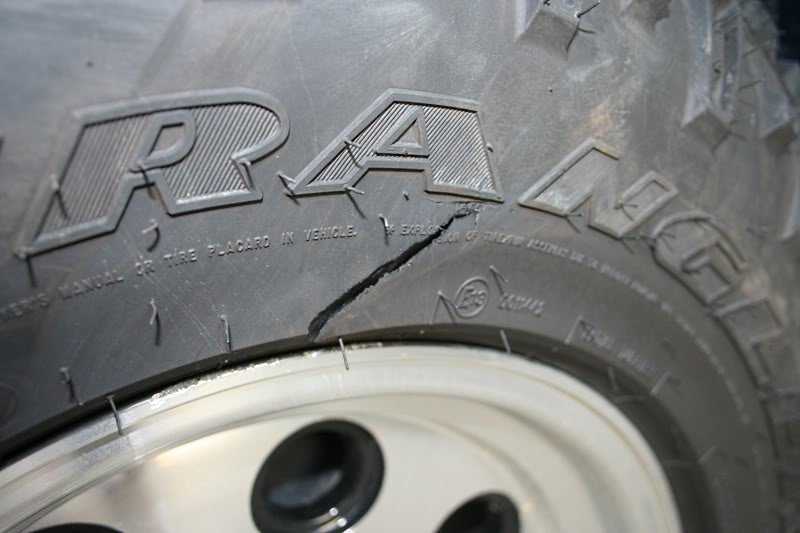
Tire overhaul. We would not put such a wheel on ourselves
Low profile tires can be repaired, but more difficult. A tear in the sidewall is easier to seal on tires with a medium or high profile.
Sometimes a cut is confused with a pluck. This is when the outer layer of the sidewall caught on something sharp, a tear formed, but the frame itself remained intact. There is nothing wrong with that, although the drivers at the tire fitting company successfully repair the cut, for which they take it accordingly.
If a piece of rubber remains on the sidewall, then glue it with ordinary superglue (101st). If it came off, then it is better to cover it with raw rubber and vulcanize. Leaving the pluck bare is not recommended, because the tire carcass, often consisting of a metal cord, will quickly corrode.
In Europe, defective or used tires are perforated before being sent for scrap to prevent their resale and possible operation.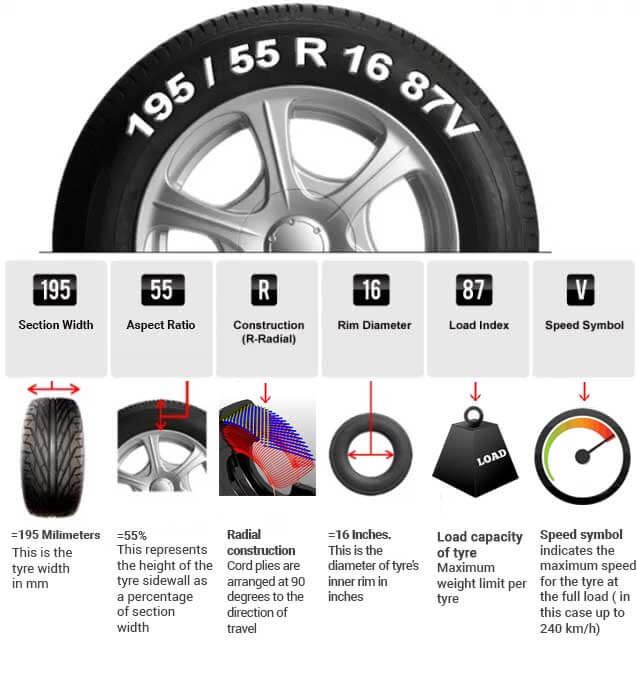 But they don’t know that we have such holes on the sidewall patched once or twice
But they don’t know that we have such holes on the sidewall patched once or twice
Cuts and hernias are not the only possible damage to the side of the tire. You can also spoil the side ring, in the process of changing shoes, for example. If it’s for garlic, then such a tire is already dangerous. Sooner or later, the tire pressure and the load in motion will start to squeeze the rubber off the rim - a wheel explosion can occur.
This ailment is repaired if the wire ring - the base - is intact. There are no special technologies and materials to correct this particular problem, but most often craftsmen use a two-component composition for chemical (also called cold) vulcanization. After mixing, the mass is pressed into a fat-free damage. Compound manufacturers recommend waiting 72 hours before mounting a tire. Of course, our masters do not pay attention to this condition - they put the tire right away. And it’s good if the wheel is flat because of this at night in the parking lot, and not on the road.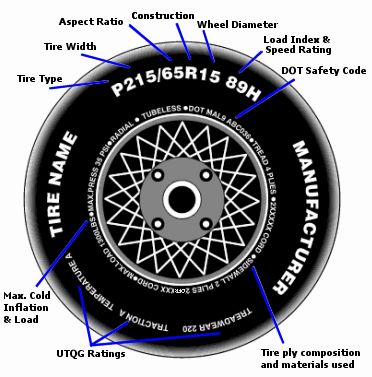
If the side ring tears are barely noticeable, but the wheel still deflates, then you can use a special liquid - a bead seal designed to seal a tubeless tire.
These seals have been used in motorsport for some time. In particular, in the American Formula D Drift Series, drivers used compounds to keep the tire on the rim even with minimal tire pressure. Now they are banned.
Pay attention to the left rear wheel of the Nissan Silvia S13. Due to too low pressure, it was literally taken off the disk under load
Every schoolboy has faced this problem when patching his bike tube after hitting something sharp. Repairing a car tire puncture with your own hands will also not be difficult even on the road. But for this you will need a pump (or compressor) and a universal tire repair kit with harnesses. All this is sold at any car market or gas station.
Repairing a tire on the side of the road with harnesses
The process is simple. If we are talking about the front wheels, then in most cases the wheel can not even be removed, it is enough to turn the steering wheel in the right direction, find the puncture site and carry out repairs. First, the hole is cleaned with a helical awl from the set. The tourniquet itself is smeared with glue and tucked into the eye of the awl, after which it is inserted into the tire hole. With a sharp movement, the tool is removed, and the tourniquet remains in place and clogs the hole. The tails are cut with a knife, but not at the root, it is recommended to leave about 20 mm. The tire is inflated and checked.
If we are talking about the front wheels, then in most cases the wheel can not even be removed, it is enough to turn the steering wheel in the right direction, find the puncture site and carry out repairs. First, the hole is cleaned with a helical awl from the set. The tourniquet itself is smeared with glue and tucked into the eye of the awl, after which it is inserted into the tire hole. With a sharp movement, the tool is removed, and the tourniquet remains in place and clogs the hole. The tails are cut with a knife, but not at the root, it is recommended to leave about 20 mm. The tire is inflated and checked.
Sometimes a nail or self-tapping screw clogs the hole by itself, remaining in it. If you see a hat in a tread, do not rush to pull it out. While the pressure is holding, move to vulcanize. And sometimes they drive with a screw in a tire for weeks.
Repair of a puncture at a tire shop
Punctures are also repaired with harnesses at a specialized service, although among professionals such repairs are not considered long-term. After a few months, the flagella dry out and can let air through. There are more advanced methods like cold and hot vulcanization. The latter is more reliable. In this case, the hole is sealed with an elastic patch, and the funnel from a foreign object is filled with a special compound. After that, a vulcanizer is put on the tire, it heats up the rubber and solders it.
After a few months, the flagella dry out and can let air through. There are more advanced methods like cold and hot vulcanization. The latter is more reliable. In this case, the hole is sealed with an elastic patch, and the funnel from a foreign object is filled with a special compound. After that, a vulcanizer is put on the tire, it heats up the rubber and solders it.
In addition to the plaster, the puncture is also repaired with special cord fungi. Craftsmen process the puncture site: drill it and treat the surface with a tool to roughen it. Then the repair area is lubricated with glue (it is also called cement) and a fungus is introduced. This is done from the inside of the tire. The cap of the fungus is rolled, and the excess legs are simply cut off from the outside.
Puncture repair with sealant
With the advent of tubeless wheels, and later run flat tires, many automakers began to abandon spare wheels.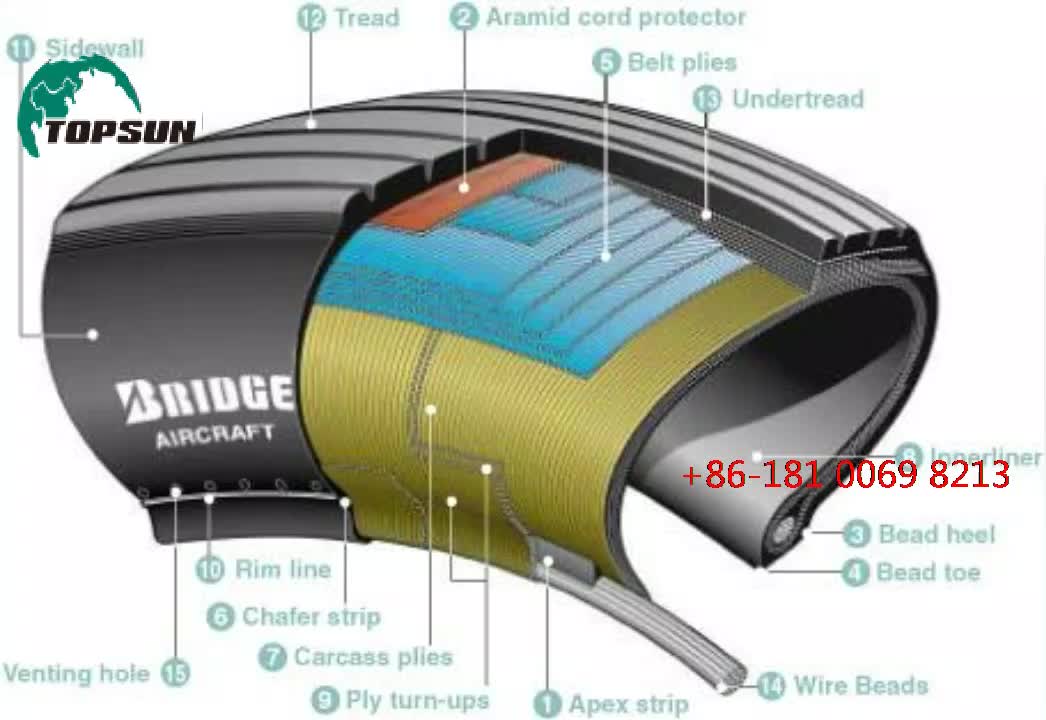 Instead, repair kits with compressors are supplied with the machines. A repair kit is essentially a bottle of pressurized sealant. Later, such spray cans began to appear on the shelves of ordinary car dealerships.
Instead, repair kits with compressors are supplied with the machines. A repair kit is essentially a bottle of pressurized sealant. Later, such spray cans began to appear on the shelves of ordinary car dealerships.
This method has not taken root in the CIS, because the condition of the roads makes it necessary to have at least a stowaway in the kit, but it can also be considered as a method of repair on the road.
The car must be jacked up and sealant must be pumped into the damaged wheel through the nipple. Next, you should spin the wheel, then pump it up, lower the car and drive a few hundred meters. If the tire tightness has not been restored, repeat the procedure.
For commercial vehicles, cutting the tread with a special device (regrower) is a common thing. Moreover, such tire retreading is provided by the factory (marked REGROOVABLE on the sidewall) to increase the service life. But there are entrepreneurs who undertake to deepen the grooves in tires for passenger cars.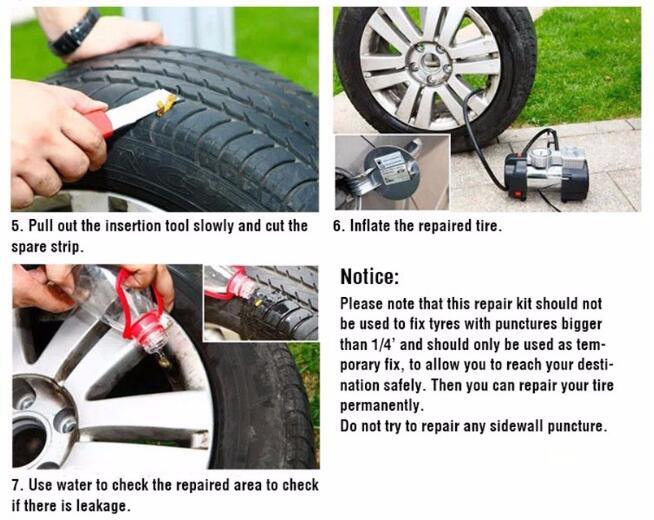 But they are not intended for such an operation. Often used tires for sale are “refreshed” in this way. Be careful!
But they are not intended for such an operation. Often used tires for sale are “refreshed” in this way. Be careful!
What is the threat?
The worst option is that the retreaded tire will shoot out on the road, as the master can damage the undertread layer when deepening the grooves. Such a tire will not be able to hold pressure at some point. There will be a boom! At best, the tire will indeed last a little longer, but is the game worth the candle? We think it's not worth it.
How is cutting made?
A regrower is used to cut the tread. Roughly speaking, this is a large soldering iron with interchangeable tips of various shapes. It goes through rubber like a knife through butter.
If the tire is for passenger cars, then it is worth taking on a regrower only in one case - when part of the tread pattern was welded with "new" rubber during repair. This is where threading comes in handy in order to restore the grooves and symmetry of the tread.